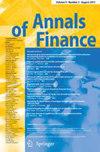It is argued that socially optimal real rates of interest cannot be positive in a stationary state. Most economies approximating a stationary state have real rates of interest depending on the interplay between utility and production functions and the structure of the exact social objective function being maximized. The objective studied here maximizes a probability distorted expectation of the sum of undiscounted utilities. The utility functions studied display constant and declining relative risk aversion coefficients. The production functions are Cobb–Douglas, asymptotically linear versions of the same and those with a declining elasticity of the marginal productivity of capital. It is observed that declining relative risk aversion utilities coupled with asymptotically linear Cobb–Douglas type production functions can deliver real rates observed in the US economy over the period January 2010, to December 2023. An analysis of income inequality considerations shows that for the economies studied there is a positive relationship between the real return on capital and the share of capital income in total income. These results support the thesis advanced by as reported by Piketty (Capital in the Twenty First Century. Harvard Business School, Cambridge, 2014)



